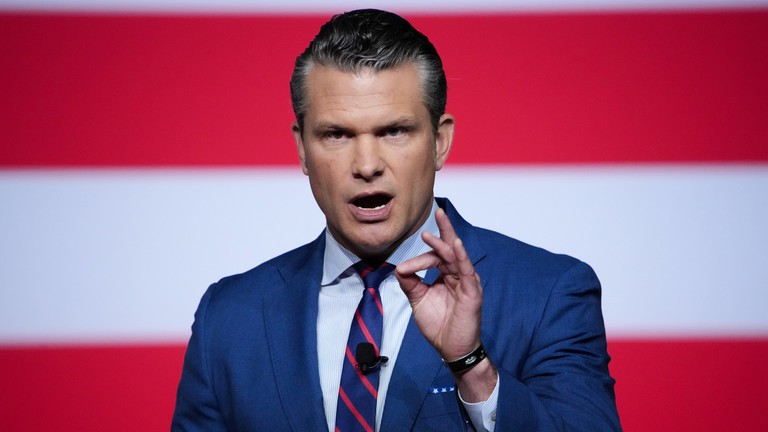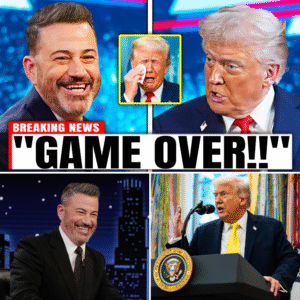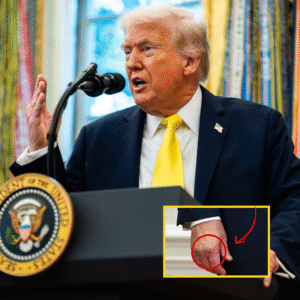BREAKING: Pete Hegseth Joins “The All‑American Halftime Show” — A Message That Could Redefine Super Bowl History!
In a move that has sparked a firestorm on social media and in political circles, Pete Hegseth — veteran, former Fox News host, and conservative public figure — has been announced as a key participant in Turning Point USA’s alternative halftime event titled The All-American Halftime Show, which is set to air opposite Super Bowl LX on February 8, 2026. The event, hosted by Erika Kirk (widow of the late conservative activist Charlie Kirk and current CEO of the organization), has been described in promotional materials as “a spiritual and cultural awakening” that aims to celebrate “faith, family & freedom.”
According to the announcement, Hegseth will deliver a live spoken-word address titled “Faith, Freedom, and the Fight for America,” interwoven with dramatic staging: live orchestra, visuals honoring veterans and first responders, and an emphasis on raw emotion over celebrity spectacle. The event’s organizers tout it as “the halftime show that stands instead of dances,” and insist the focus is “about character — about standing for something real when everything else feels fake.”
While full broadcast details and performer line-ups remain unconfirmed, the show marks one of the most overt attempts yet by a political-movement group to create counterprogramming to the traditional Super Bowl halftime spectacle.
A cultural moment — but what’s driving it?

The genesis of this alternative show lies in the announcement that Latin superstar Bad Bunny would headline the official Super Bowl LX halftime show. That decision triggered sharp backlash from conservative commentators—some arguing Bad Bunny’s Spanish-language performance and cultural profile failed to reflect what they consider mainstream “American” values.
In response, Turning Point USA (founded by Charlie Kirk and now led by Erika Kirk) launched this counter-halftime event, pledging to showcase an alternative rooted in patriotic, faith-based, English-language programming. According to the organization’s website, fans are being asked what genre they’d like—choices include “Americana,” “Classic Rock,” “Country,” “Worship,” and pointedly, “Anything in English.”
Why Hegseth matters
Pete Hegseth brings a specific brand of conservative credibility: veteran service, media profile, and a messaging style that emphasizes duty, patriotism and moral clarity. In agreeing to this role, he elevates the event beyond a mere rally or concert into a politically symbolic moment — signaling that the organizers are positioning the show not just as entertainment, but as a cultural statement.
Hegseth’s involvement also underscores how the boundary between politics, culture and mass-media spectacle is blurring. What was once the domain of sports and pop music is now a venue for ideological contestation. With Hegseth stepping in, the All-American Halftime Show introduces a new axis: identity, nationalism and faith becoming the stage.
Anticipation and backlash
The announcement has already generated viral social-media momentum, with supporters celebrating what they view as a patriotic alternative to mainstream pop culture. “He’s not here to entertain,” one commenter wrote. “He’s here to remind us what America used to be — and what it still can be.”
But critics are equally vocal. Some view the event as a partisan veer into winter-rally territory, repurposing the half-time slot for ideological mobilization rather than uniting audiences through entertainment. Others see the explicit English-language framing as exclusionary or reactionary. Reddit threads have framed it as “a halftime alternative for racists” and questioned whether the show will deepen cultural divides rather than bridge them.
What this could mean for U.S. politics and culture
If the All-American Halftime Show truly airs live opposite Super Bowl LX, it will mark a first: a large-scale national event explicitly structured to parallel and counter the mainstream entertainment juggernaut of the Super Bowl. That raises a number of implications:
- Media fragmentation: Audiences may split between traditional sports/entertainment and ideologically-inflected alternatives.
- Cultural symbolism over entertainment: The event suggests that even massively popular cultural moments (like a halftime show) are now battlegrounds for identity and values.
- Mobilization tool: For Turning Point and aligned audiences, this show isn’t just for entertainment—it is staked as a rallying point, signaling and reinforcing a particular worldview.
- Polarization risk: The framing (“Anything in English”, “faith, family & freedom”) may heighten backlash from those who see the event as exclusionary. It could deepen cultural divides rather than create shared experience.
The bottom line
Whether you view this as a bold reclaiming of national identity or a divisive ideological stunt, Pete Hegseth’s involvement in the All-American Halftime Show ensures it will be impossible to ignore. Come February 8, 2026, the Super Bowl halftime slot may no longer just be about flashy performances and celebrity appearances — it might become a stage for competing visions of America itself.
As Hegseth said in his statement: “This isn’t about ratings or politics. It’s about character — about standing for something real when everything else feels fake.”
Now the question is: will America tune in together—or tune out apart?





